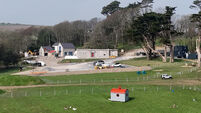Reactive role makes you quick on the draw
Now scientists have found that what is true for Hollywood gunslingers might also help the rest of us cope with day-to-day dangers such as crossing the road.
People move faster when they react to something than when they initiate an action themselves, a study shows.
The difference is only 21 milliseconds, but it could be enough to save your life.
In the classic Hollywood Wild West stand-off, the gunman with the itchiest trigger finger tends to end up dead.
The cowboy who goes for his gun second gets his shot off first.
In reality, no-one has reactions lightning fast enough to guarantee winning a real duel, John Wayne style, by waiting for their opponent to draw.
It would take the brain a lengthy 200 milliseconds to start the hand moving – and the delay could prove fatal. But once in motion, the hand moving second would travel faster, according to the research.
The mechanism, hard-wired into the brain, could be a primitive aid to surviving in a harsh environment, say the scientists.
Study leader Dr Andrew Welchman, from the University of Birmingham, said: “As a general strategy for survival, having this system in our brains that gives us quick-and-dirty responses to the environment seems pretty useful.
“21 milliseconds may seem like a tiny difference, and it probably wouldn’t save you in a Wild West duel because your brain takes around 200 milliseconds to respond to what your opponent is doing, but it could mean the difference between life and death when you are trying to avoid an oncoming bus.”
The Nobel Laureate physicist Niels Bohr first suggested the idea and tested his theory by having toy pistol fights with his colleague George Gamow.
“Bohr took the reactive approach and won every time, thus proving himself correct – or at least it looked that way,” said Dr Welchman.
“Actually he was probably just a very good shot.”












